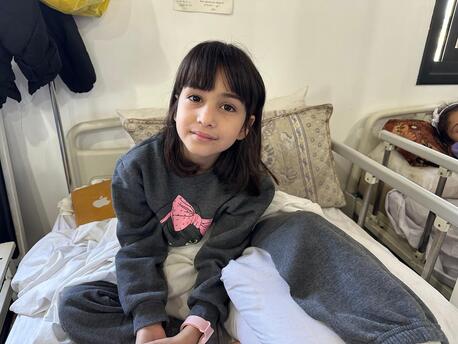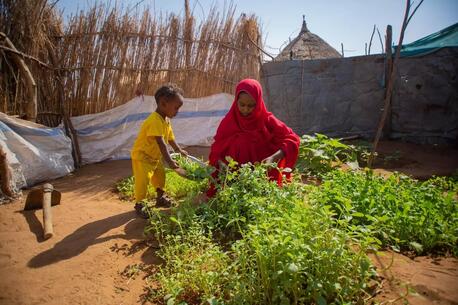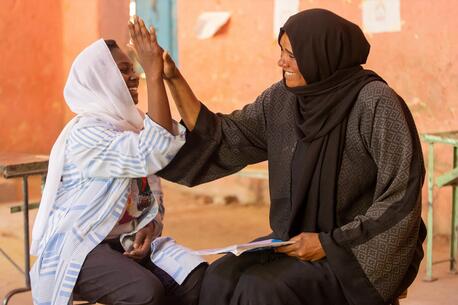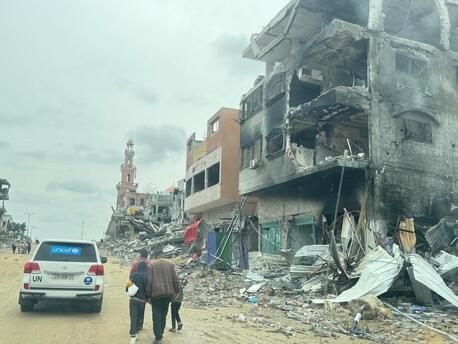
UNICEF Aid Is Reaching Gaza — But Full, Safe Access Is Urgently Needed
UNICEF continues to call for an immediate humanitarian ceasefire and sustained, unhindered access to deliver lifesaving supplies to children trapped in a war zone with nowhere safe to go.
The situation in the Gaza Strip is bad and getting worse
Standing beside a long line of hundreds of trucks filled with humanitarian aid waiting to be cleared for entry into the Gaza Strip from Egypt on March 18, UNICEF spokesperson James Elder did not mince words. "Outrageous, how many lifesaving supplies are so desperately close to those who need them," he said. "Food, water, medicines, lifesaving supplies. Because we know, just across the border, children have died of malnutrition. Children have died of dehydration."
As the intense bombardment of Gaza nears the six-month mark, the situation on the ground is bad and getting worse. More than 80 percent of households lack access to safe water. Nine of every 10 people don't have enough to eat. Half the population has reached catastrophic levels of food insecurity, and famine is imminent in northern Gaza.
UNICEF trucks are getting through, but restrictions blocking humanitarian aid deliveries are preventing children from receiving the emergency supplies they need to survive. The amount of aid allowed in so far is just "a drop in the bucket," UNICEF Executive Director Catherine Russell said.
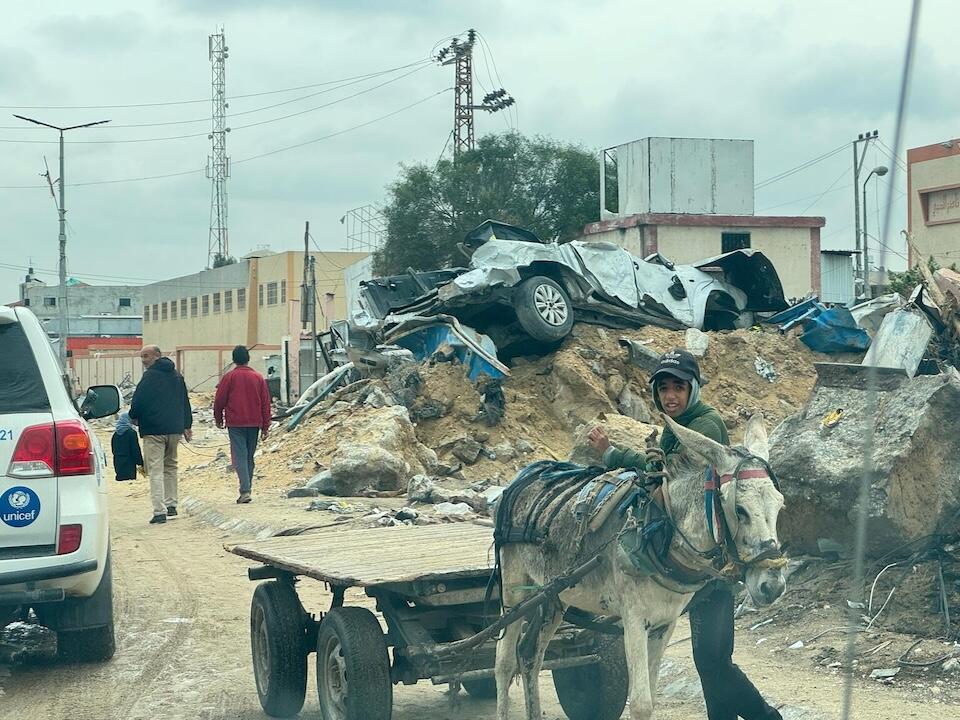
In the past two weeks, UNICEF moved 48 trucks full of humanitarian supplies into Gaza
Full, safe and unhindered access is needed to scale up delivery. Deliveries by boat or dropped from planes, while better than nothing, are inefficient and inadequate for organized distribution to the large numbers of people in need. The most effective way to reach Gaza's children with lifesaving supplies is overland, by truck.
Since October, UNICEF has delivered 594 truckloads of aid to children and families in Gaza. Over the past two weeks, UNICEF moved 48 truckloads of critical emergency suppliesacross the border, including:
- various vaccines
- nutrition supplies for 300 children for one month, including 90 cartons of high-protein energy biscuits
- water pipes for infrastructure repair and maintenance
- syringes
- acute watery diarrhea periphery kits for 6,900 patients
- 1,500 hygiene and dignity kits
- 11,300 synthetic blankets
- 7,800 sleeping mats
- 750 family tents
- obstetric surgical kits to cover 2,500 deliveries
UNICEF also recently delivered 50 incubators to neonatal intensive care units in three Gaza hospitals, with support from the Bill & Melinda Gates Foundation. Watch the video:
The cold chain must be maintained to preserve vaccines so they can protect children from disease outbreaks
Some supplies, like vaccines, must be kept at a stable temperature. UNICEF Emergency Coordinator Sahnon Ali described his journey as he delivered a shipment of vaccines to a hospital in Gaza City, driving down streets he knows well, once crowded and lively, now empty and lined with destroyed and damaged buildings.
No child deserves to go through the suffering that I've seen children in Gaza going through. — UNICEF Emergency Coordinator Sahnon Ali in Gaza City
"My mind is always thinking about making sure the temperature of the cold chain is maintained to the required level so that the vaccine is safe and it's been delivered and transported inside the refrigerators at the hospital," Ali said.
"The most challenging moment was passing by the hospital and seeing the damage, but also seeing the number of people who are coming to look for medications that they need for their children, for their parents," he continued. "No child deserves to go through the suffering that I've seen children in Gaza going through."
Rafah is crowded with children and families — there is nowhere safe for them to go
Speaking on March 19 from Rafah in southern Gaza, where more than 1 million Palestinians are sheltering, trying to flee the fighting, James Elder told ABC News: "It's hard to walk around now, such is the density of people — people sleeping on the streets, people in tents. It's cold, it's been raining and [there are] drones above them all the time. They know drones will drop bombs. There's trauma upon trauma for people here."
There's trauma upon trauma for people here. — UNICEF spokesperson James Elder in Rafah
"The only way to get that aid through is on the roads," Elder continued. "And it exists. The aid is a few miles from here. There are many, many other entrance points ... We are ready to deliver that aid if given the chance."
Wherever and whenever children are in need, UNICEF is there to help. Your contribution can make a difference. Please donate.
